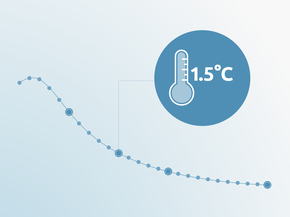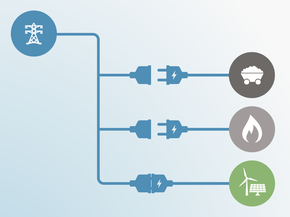Country summary
Overview
The Philippines’ ratification of the Paris Agreement in March 2017 was a welcome move by President Rodrigo Duterte's administration. However, uncertainty surrounds its intention to take the substantial action required to meet his country’s Paris climate commitment to cut emissions by 70% below business-as-usual (BAU) by 2030.
The Philippines’ Climate Change Commission is in the process of revising its Nationally Determined Contribution (NDC), which we rate “2˚C compatible” because it is a conditional target. There is no clarity around the Philippines’ unconditional commitment, nor on the scale of finance it would require to achieve the conditional part of its NDC. Neither is the baseline on which it bases its NDC clear. Turning a significant portion of its target into an unconditional commitment could improve the Philippines’ rating to “1.5˚C Paris Agreement compatible”. The Philippines may deliver a strengthened NDC by mid-2019, possibly earlier: No commitments have been made but it could gain a 1.5˚C compatible rating if it manages to deliver an ambitious, unconditional NDC while facing significant internal challenges.
Information currently available on the Philippine government's website presents a target of 67% below business-as-usual (BAU) but does not specify if any portion of this commitment is unconditional. Decreasing the targeted % reduction would worsen the NDC and violate the Paris Agreement, which states that successive NDCs will represent “a progression beyond the Party's then current nationally determined contribution and reflect its highest possible ambition”.
The NDC and its revision present targets as reductions compared to a business as usual (BAU) pathway, but the Philippines’ submission does not define that BAU pathway, rendering the NDC emissions level uncertain. This lack of transparency makes it difficult to quantify the Philippines’ climate commitments, which impacts the CAT rating, and undermines the country’s ability to develop concrete policy measures to reach these targets.
Announcements on continued support for coal-based electricity generation and increasing coal-fired power capacity to 2040 add to this uncertainty. Expansion of coal capacity continues. In 2015, the Philippines had around 12 GW of coal-fired power capacity under construction or in the pipeline. Since then they built around 2.8 GW and today there are still around 9.4 GW in the pipeline and 3.0 GW under construction. This expansion has triggered concerns over the potential creation of billions of USD of stranded coal assets.
Part of the TRAIN (Tax Reform for Acceleration and Inclusion) Act, implemented in 2018, includes raising taxes on coal production, which are scheduled to increase year on year (raised from 10 pesos in 2017 to 150 from January 2020 onwards). The coal tax helps level the electricity generation playing field by increasing coal generation costs, which is a positive signal but still too small to spur a shift away from coal, let alone a phase-out.
We rate the Philippines’ conditional target of 70% below business as usual (BAU) levels by 2030 “2°C compatible”—if taken at face value. The Philippines’ emissions pathway towards 2030, as proposed in its INDC, could be rated “1.5°C Paris Agreement compatible,” if it were unconditional. However, given the conditional nature of the INDC target, we have downgraded it by one category to “2°C compatible.” (See “fair share” section).
In 2017, the Philippines Senate voted unanimously to ratify the Paris Agreement. The Philippines has not yet submitted its NDC to the UNFCCC registry as of December 2018. The current INDC became its NDC with the Paris Agreement ratification (UNFCCC, 2015). For this reason, we only refer to the NDC throughout this assessment.
In its NDC, the Philippines states that its 2030 target is conditional on “the extent of financial resources, including technology development & transfer, and capacity building, that will be made available to the Philippines.” The target covers all emissions from all sectors, including land use, land-use change and forestry (LULUCF) (Government of The Philippines, 2015). The NDC does not quantify future LULUCF emissions. This introduces substantial uncertainty in interpreting the NDC targets, and makes quantifying emissions levels excluding LULUCF difficult. When assuming that industrial, energy and agricultural emissions (emissions excluding LULUCF) are also to be reduced by 70% below a BAU the CAT estimates this would result in emissions reverting to 1990 levels by 2030 (excluding LULUCF). See Pledges and targets.
According to our analysis, and in common with most countries, the Philippines will need to implement additional policies to reach its conditional NDC. Full implementation of the planned “National Renewable Energy Program” and “The Energy Efficiency and Conservation Roadmap” would lower emissions by 11% compared to current policy projections. However, the NDC target is unlikely to be met if all the announced coal-fired power plant capacity (more than 10 GW) were to be built. See Current Policies and Projections.
Further analysis
Latest publications
Stay informed
Subscribe to our newsletter






